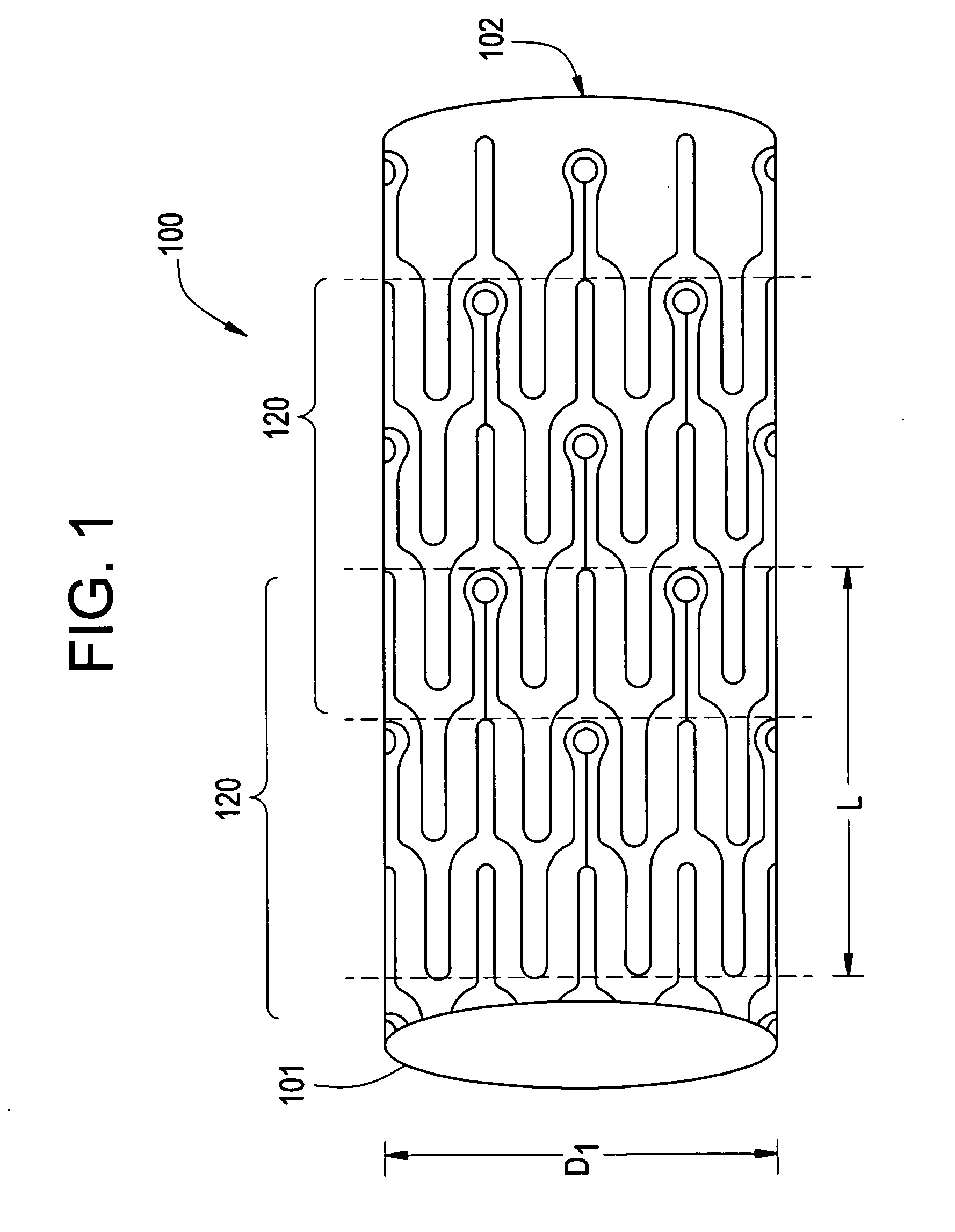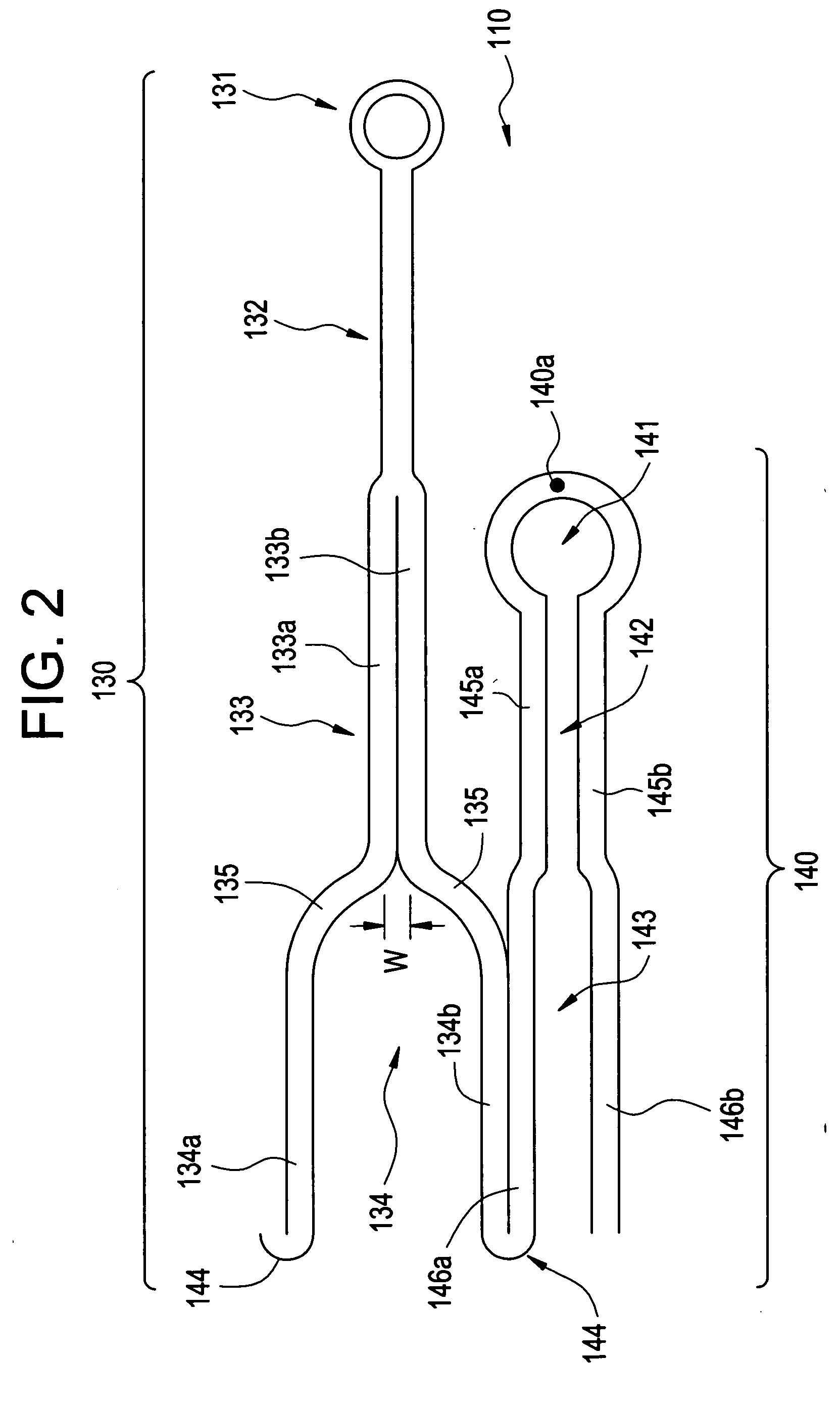Intraluminal medical device with nested interlocking segments
a medical device and interlocking technology, applied in the field of intraluminal medical devices, can solve the problems of balloon stents often impractical for use in some vessels, undetectable folding and closing of lumens, and affecting so as to increase the stability of the stent and increase the vascular support
- Summary
- Abstract
- Description
- Claims
- Application Information
AI Technical Summary
Benefits of technology
Problems solved by technology
Method used
Image
Examples
Embodiment Construction
[0048]FIG. 1 illustrates a schematic view of a stent 100 according to one embodiment of the invention. Unless otherwise indicated, the length L is the length of a segment, for example, segment 120, of the stent 100 in its expanded state, whereas diameter D is the diameter of the stent 100, wherein D1 is the diameter of the stent in its constrained state and D2 is the diameter of the stent in its expanded state. As referenced herein, an L / D ratio refers to the ratio of the length L of a segment of the stent to a diameter D of the stent in its expanded state. Although the stent can be made from any of several known shape memory or superelastic biocompatible materials, as should be readily appreciated by the artisan, the stent 100 described herein is preferably comprised of a superelastic alloy such as Nitinol. Most preferably, the stent 100 is made from an alloy comprising about 50.0 per cent (as used herein these percentages refer to weight percentages) Ni to about 60 percent Ni, and...
PUM
 Login to View More
Login to View More Abstract
Description
Claims
Application Information
 Login to View More
Login to View More - R&D
- Intellectual Property
- Life Sciences
- Materials
- Tech Scout
- Unparalleled Data Quality
- Higher Quality Content
- 60% Fewer Hallucinations
Browse by: Latest US Patents, China's latest patents, Technical Efficacy Thesaurus, Application Domain, Technology Topic, Popular Technical Reports.
© 2025 PatSnap. All rights reserved.Legal|Privacy policy|Modern Slavery Act Transparency Statement|Sitemap|About US| Contact US: help@patsnap.com



